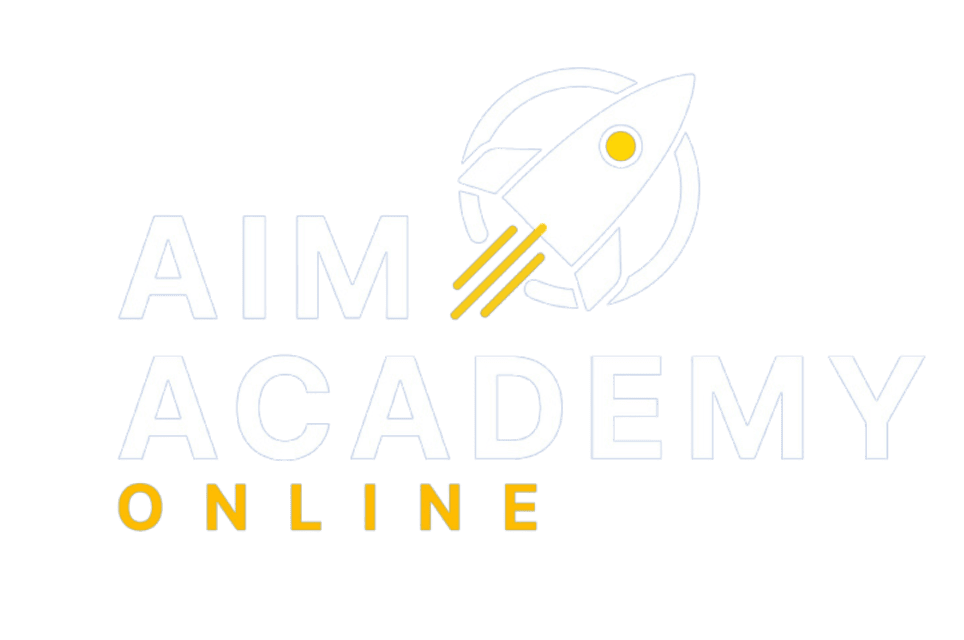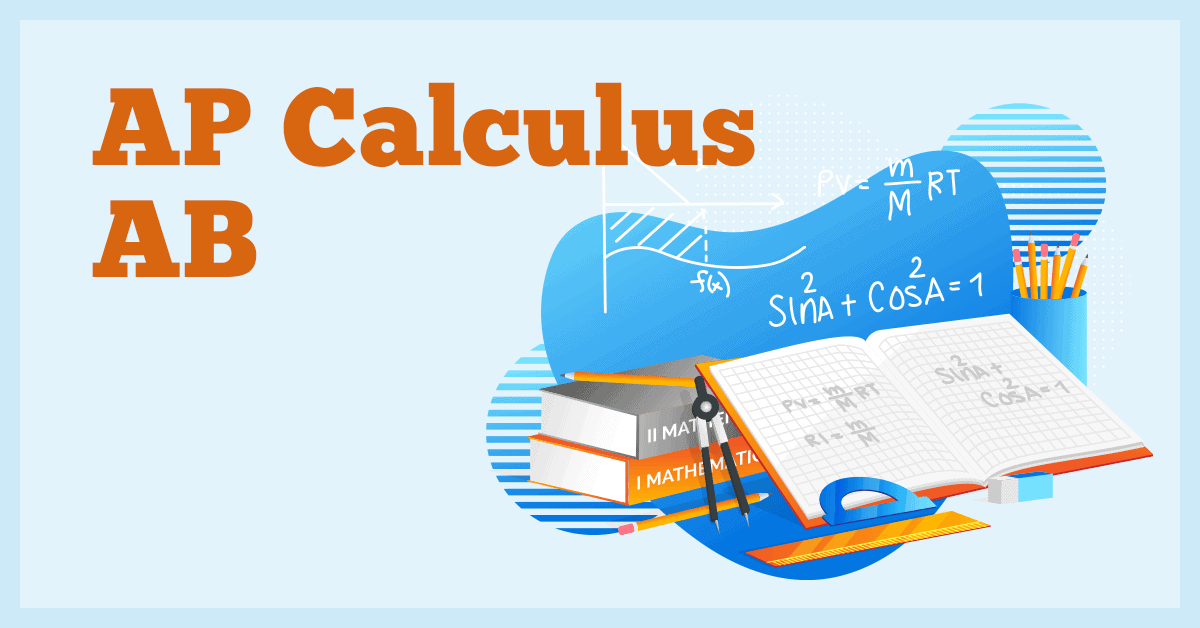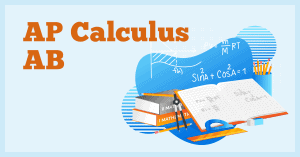Course Description
Course Syllabus coming soon.
This online course features two weekly 75-minute live sessions. The live sessions will promote interaction and student engagement.
Dive into the dynamic world of calculus with our full-year AP Calculus AB course, meticulously crafted to align with the College Board’s rigorous standards. This course is designed to:
- Enhance understanding through big ideas like modeling change, approximation, and function analysis.
- Use technology to explore concepts, confirm results, and assist in data interpretation.
- Build arguments and justify mathematical conclusions using definitions and theorems.
Our students will experience a rich, multi-faceted approach to calculus that includes theoretical learning, practical application, and extensive exam preparation. The curriculum emphasizes a multi-representational approach to problem-solving, with concepts expressed graphically, numerically, analytically, and verbally. By exploring these connections, students will:
- Work with functions in various forms—graphical, numerical, analytical, and verbal.
- Understand derivatives as rates of change and their use in various contexts.
- Grasp the concept of integrals and their application in calculating accumulated changes.
- Understand the relationship between the derivative and the definite integral as expressed in both parts of the Fundamental Theorem of Calculus.
Throughout the course, students are encouraged to utilize technology not only as a learning tool but as a means to reinforce and test their understanding of calculus principles.
Students will be guided to:
- Model real-world situations mathematically.
- Communicate effectively about mathematical concepts and solutions.
- Evaluate the reasonableness of their answers.
Our ultimate goal is to nurture an appreciation for calculus as both a foundational tool for further study and a remarkable human accomplishment. By the end of the course, students will be prepared to excel in the AP Calculus AB exam and carry with them a deep understanding of calculus that will support their academic and professional futures.
*Source: College Board AP Calculus AB Course Description
Course Structure
Our AP Calculus AB course is designed with a structured approach to ensure comprehensive understanding and mastery over the academic year. Here’s how we’ve laid out the learning experience:
- Interactive Live Sessions
- Students engage in two weekly live sessions, each offering a blend of instruction and real-time interaction to solidify students’ understanding of new concepts.
- Diverse Homework Assignments to reinforce learning and ensure progress
- Worksheets for practice on key topics
- Mathematical circuit worksheets
- Quizzes for immediate feedback on learning progress
- Adaptive Delta-math assignments
- Additional exercises and FRQ practice questions to challenge and enhance understanding
- Continuous Assessment
- Begin each class with a 15-minute cumulative mini-quizzes or mastery checks inspired by the FRQ questions from AP Calculus Exams conducted in previous years, designed to consolidate the learning and keep key concepts fresh.
- Approximately six strategically placed tests throughout the year assess comprehension and retention, providing opportunities to review and improve.
This structure is created to support different learning styles, encourage consistent study habits, and allow for ongoing assessment of each student’s progress. With this format, students are well-prepared not only for the AP Calculus AB exam but also for mathematics in higher education.
Who should enroll?
Our AP Calculus AB course is tailored for 11th and 12th graders who aspire to excel in mathematics and are preparing for college-level coursework. Before studying Calculus, all students should complete the equivalent of four years of secondary mathematics designed for college-bound students: courses that should prepare them with a strong foundation in reasoning with algebraic symbols and working with algebraic structures.
To join and succeed in this advanced course, students are required to:
- Pass a Prerequisite Test: Gain admission by demonstrating a solid understanding of advanced mathematical concepts through a prerequisite test.
- Have Algebraic Proficiency: Exhibit fluency in algebraic manipulations such as factoring, distributing, combining like terms, and manipulating exponents and radicals.
- Have a Strong Foundation in Algebra and Functions: Have a robust foundation in algebra and functions, including the ability to read and interpret graphs and tables, and solve polynomial and exponential equations and inequalities with precision.
- Master Geometric Concepts: Be adept with geometric concepts, including calculating areas, volumes, and understanding the properties of various geometric figures such as circles and sectors.
- Possess Trigonometric Skills and Unit Circle Fluency: a solid understanding of trigonometric principles, the ability to solve trigonometric equations and inequalities, and fluency in using the unit circle to determine the sine and cosine of various angles.
- Have Pre-Calculus Competencies: Have completed courses in Algebra, Geometry, Trigonometry and have studied elementary functions like linear, polynomial, rational, exponential, logarithmic, trigonometric, inverse trigonometric, and piecewise-defined functions.
- Have Functional Literacy: Understand the language of functions, including terms such as domain, range, odd, even, periodicity, symmetry, zeros, intercepts, and be able to describe behaviors of functions such as increasing and decreasing.
- Understand Function Transformations such as shifts, stretches, and reflections.
- Understand the concepts of asymptotes (vertical, horizontal, and oblique) and the behavior of functions at infinity
- Have the ability to understand, interpret and work with Composition of Functions: Understanding how to compose functions (function of a function) and how to decompose a function into two or more simpler functions.
- Have the ability to understand, interpret and work with Inverse Functions: Being able to find and understand the significance of the inverse of a function, including graphical interpretations and the algebraic process of finding an inverse.
-
Possess Advanced Algebraic Techniques: Be skilled in algebraic techniques vital for calculus, including working with complex fractions, solving systems of linear and nonlinear equations by graphing.
Prerequisites
Difference between AP Calculus AB and AP Calculus BC
Technology Requirements
- High speed, broadband Internet
- Sound card and microphone (for live sessions)
- Streaming video capabilities to watch recorded lectures
- Printer for printing worksheets and assignments
- TI-84 calculator
Evaluation and Feedback
Homework and projects are the best tool for students to practice the skills they are learning, and I grade homework/provide feedback so they learn as they continue working toward mastery. Assignments are generally graded within 5 days of submission. Grades are based on a combination of homework, quizzes, labs, and exams/projects. Some assignments in this course are graded based on completion to encourage practice and participation, while others are evaluated in detail to ensure students learn to present their work according to College Board standards. Students are also given a participation grade to account for timeliness of completing assignments, class participation, and effort. Communication will take place as needed through email.
Once registered, you will receive a welcome email within 24 hours. Throughout the course, parents will only be contacted if issues arise, as I try to encourage students to take ownership of the class and contact me directly if they have any concerns. At midterm and close of the course progress reports will be sent to parents. Parents are always welcome to contact me with any issues or concerns, as they are partners in this endeavor.
View Course Application coming soon




Reviews
There are no reviews yet.